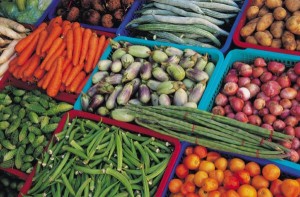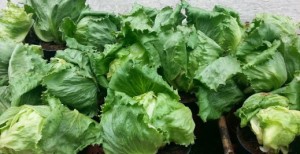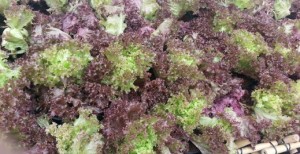Fibre in the diet is the buzz word around; being talked about so often. Most of correlate fibre with salad. But it’s something much more than that. Here we go on the journey to discover…
Fibre forms the skeleton framework of plants. Found within the cell wall of each cell, they comprise of substances that are resistant to human digestive enzymes hence indigestible.
Two forms, the soluble & the insoluble, collectively form the fibre family. The insoluble forms – found in bran of whole grain & skin of fruits & veggies, corn, popcorn, brown rice, fruits like apples and pears, vegetables like spinach, asparagus and okra (bhindi) and 100% whole grain breads and pastas etc – create bulk, causing mechanical expulsion of the intestinal waste. In short it is the scrub brush of the intestines.
The soluble form found in nuts, beans & lentils dissolve in water forming a gel like sticky substance that combines with fats in the intestines & prevent their absorption. Soluble fibres are also found in oats, psyllium, pectin and guar gum. Pysllium husk (isabgol) has 14 times more soluble fiber than oat bran.
Insoluble fibres in the food act like a sponge absorbing water & softens the stool, producing volume and there by easing its evacuation along with unwanted debris. Since it creates bulk when consumed it makes one feel full faster, thereby also reducing food intake which is advantageous for those who are trying to lose weight.
The soluble fibre on the other hand, binds with bile acids & cholesterol in the intestines, thereby preventing its absorption. This causes reduction in the cholesterol level in the blood. Soluble fibre-rich foods also slow down the absorption of carbohydrates in diet. Thus sugars are slowly released into the bloodstream thereby keeping their levels in control.
The recommended daily intake of fibre is at least 20 grams for women and at least 30 grams for men. In pregnancy 20-30 gms of intake is recommended. Both oat bran and rolled oats (one serving) provide more than 30 percent of this amount. From a health standpoint, fibre improves cholesterol levels, regulates blood sugar and also helps to fill you up there by keeps weight in control. Eating plenty of fibre along with plenty of water together with some exercise can boost a sluggish system which so often is present, especially during pregnancy.
Fibre intake of 18 gm/day (which includes both soluble and insoluble fibre) would lower cholesterol to an appreciable degree; combined with the benefits of other healthy (cholesterol-lowering) behaviours (e.g. exercising, avoiding oily foods, plenty of liquid consumption) would make a worthwhile difference.
Fibre intake increases if you:
- Avoid fatty, oily foods, like, pastries, chips & farsans
- Add more fruits & veggies in your diet
- Use whole grains, like bajra, jowar, ragi, wheat, oats with bran, & brown rice, whole grain bread & pastaEat more potatoes or sweet potatoes with skin (boiled and not fried).
- Include more lentils (dals) – unpolished preferred
- Have fruits instead of ready juice.
- Have soups or juices without straining the liquid (with the pulp)
- Avoid ready to eat foods & processed foods like rawa, maida, cream biscuits, cakes & pastries. A diet devoid of fibre would land one with constipation leading to fissures, piles, fistula, inflammatory bowel disease, high cholesterol & triglycerides, colonic cancer, obesity and even colon cancer. Obesity in turn causes, metabolic problems leading to diabetes, hypothyroid, polycystic ovarian syndrome in females.
- However in diarrhoea, Inflammatory bowel disease (ulcerative colitis), post intestinal surgery, post radiation damage (to intestines) and strictures of the bowel, low fibre diets are recommended.
It is very important that as adults we inculcate this habit in our children so that in long run it would only do them good. If fruits, nuts, salads, boiled or roasted pulses, boiled potatoes, bhel, vegetable sandwich, popcorn were packed in children’s tiffin boxes, wouldn’t it develop a healthy eating habit in them in the later years. If such eating becomes part of the life style in every house hold, it may not seem a herculean task to increase fibre in diet. Make healthy eating a way of life & enjoy good health.






Very nicely put Dr Suman. Your patients are lucky to have you as their doctor.
Thank you Ms Malini. I will be very glad if it influences atleast one adult female, because it would subsequently benefit one entire family .Hope this article creates a change in your diet.
Thank you, Ms menon & Dr Patel.I am glad i have been clear in projecting my view. I hope it will change the diet plans of few families.
Dr. Suman very useful information . Very aptly mentioned about the benefits of fibres and nicely emphasised on adequate water (plenty of liquid) consumption with fibre intake to prevent constipation.
Thank you so much sharing very good advice on diet, and making us educated about the diet rutting.